Every now and then you come across an advertisement for the purchase of amber beads, and you inevitably wonder: why are they buying it and isn’t it time to join the profitable business? And how not to make a mistake in choosing “Baltic gems”?
Curious! Amber has acquired many poetic synonyms - sea incense and the gift of the sun, tears of the daughters of Phaeton and a white-flammable stone. And one of the ancient peoples suggested that it was fossilized lynx urine!
So why would anyone urgently need such beads?
Signs of an expensive and cheap stone
Amber is the hardened resin of coniferous trees, the exact species of which has never been established, but some of them grew more than a hundred million years ago. During this time, the price of this resin has increased - in other periods of history it was worth more than gold!
Curious! Amber is mentioned both in the cuneiform verses of an unknown Sumerian poet and in the Odyssey.
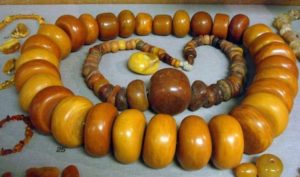 The cost of a mineral depends on its grade and purity, as well as the presence or absence of inclusions (insects and remains of prehistoric conifers). Brown amber remains the cheapest - it contains a lot of impurities, and the cloudier the stone, the cheaper it is. The yellow mineral remains average in price. Green will cost more than both yellow and orange. Even more expensive is red, if it is pure.
The cost of a mineral depends on its grade and purity, as well as the presence or absence of inclusions (insects and remains of prehistoric conifers). Brown amber remains the cheapest - it contains a lot of impurities, and the cloudier the stone, the cheaper it is. The yellow mineral remains average in price. Green will cost more than both yellow and orange. Even more expensive is red, if it is pure.
Inclusion is a separate case. Shards with them are not encountered too often, especially when we are talking about prehistoric spiders or colorful butterflies getting into the resin. A transparent piece found in the Dominican Republic was recognized as the most beautiful, containing a bright soaring beauty with a wingspan of almost 15 cm. The minimum price for an average quality inclusion is not less than $500. Truly exclusive stones have long been numbered and bought up by collectors. And imitations are constantly offered to gullible customers!
Curious! The craftsmen of Ancient Rome already learned to falsify inclusions, and for a long time their “masterpieces” were considered authentic. It was only in the 19th century that the fake was recognized!
Why do buyers buy antique amber?
Old products are in demand primarily as traditionally expensive antiques. At the same time, the risk of purchasing a fake is quite high - they learned to falsify stone a long time ago, and if it is not acrylic with celluloid, then you can easily run into buying copal (also resin, but not coniferous, but legumes, for example, Madagascar)! Or it could be cowrie gum.
The increased interest in “tears of the sea”, and even round ones, is explained by several reasons:
 in folk medicine, a belief has become established about the ability of amber necklaces to cope with diseases of the thyroid gland, which helps to increase the demand for them;
in folk medicine, a belief has become established about the ability of amber necklaces to cope with diseases of the thyroid gland, which helps to increase the demand for them;- the amber plant in Kaliningrad (the only enterprise in the world that mines amber) has raised prices for the mined stone by more than one and a half times;
- the possibility of reselling amber to China and the United Arab Emirates: the Chinese believe that oval or round gold stones help maintain health, and the Arabs have returned to the fashion for rosary beads.
Important! When you take kilograms of your grandmother’s beads to buyers, be prepared to part with only a few grams of pebbles of a particular fraction: most likely, they will only take deep yellow beads of a certain size.
Negative qualities of amber
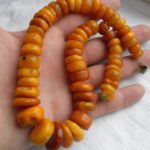 The stone, which has found application not only in jewelry, but also in medicine, has many useful properties - from the ability to cleanse and give energy to rejuvenation. All this - due to the “ability” to absorb various “dirt”: waste, toxins, etc. But this property can also turn out to be excessive, accelerating metabolic processes to unacceptable levels when the body’s cells begin to recycle themselves. Most often, this happens if you get too carried away with taking succinic acid.
The stone, which has found application not only in jewelry, but also in medicine, has many useful properties - from the ability to cleanse and give energy to rejuvenation. All this - due to the “ability” to absorb various “dirt”: waste, toxins, etc. But this property can also turn out to be excessive, accelerating metabolic processes to unacceptable levels when the body’s cells begin to recycle themselves. Most often, this happens if you get too carried away with taking succinic acid.
Advice! Amber has the ability to collect negative energy, therefore, a product purchased or inherited must be cleaned, for example, by keeping it in the freezer for a day. From time to time, amber needs to be washed in clean water.
How can you tell if a mineral is real?
It is not easy to distinguish a real stone from fakes by eye. There are several ways to verify authenticity:
 a glass-like mineral needs to be slightly scratched with a copper needle - a mark will remain if the stone is real;
a glass-like mineral needs to be slightly scratched with a copper needle - a mark will remain if the stone is real;- any sharp object should slightly crumble the amber – artificial material will produce shavings;
- plastic imitation differs from amber in that it peels off if a piece is broken off (natural mineral crumbles);
- in a saline solution (8 tablespoons per glass of water) genuine amber should float, in a fresh solution it should sink: a fake will sink in any case;
- When you touch a natural mineral with a hot needle, you should smell the smell of resin. Curious! In Ancient Greece, amber was used as incense in incense compositions..
- Under ultraviolet rays, natural stone should luminesce.
Advice! Modern technologies sometimes make it possible to bypass established inspection methods. It is better to contact a specialist - one can be found in a large jewelry store.


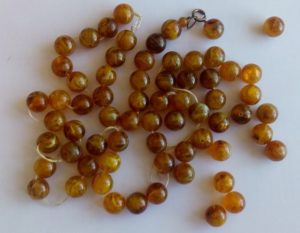 in folk medicine, a belief has become established about the ability of amber necklaces to cope with diseases of the thyroid gland, which helps to increase the demand for them;
in folk medicine, a belief has become established about the ability of amber necklaces to cope with diseases of the thyroid gland, which helps to increase the demand for them;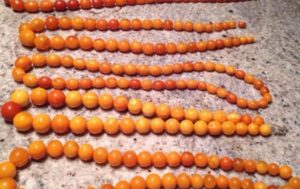 a glass-like mineral needs to be slightly scratched with a copper needle - a mark will remain if the stone is real;
a glass-like mineral needs to be slightly scratched with a copper needle - a mark will remain if the stone is real; 0
0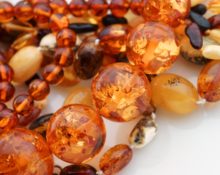
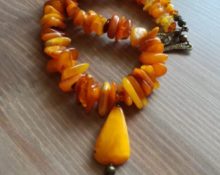
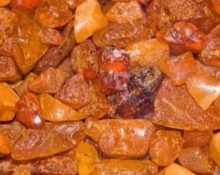
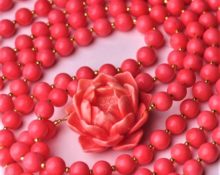
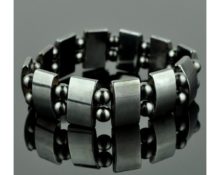

You can scratch with anything. Amber is soft. Remember the rings from Soviet times. How quickly they lost their original appearance. My mother's beads have been preserved. In my childhood they were transparent, light honey color. Over the course of 60 years they became cloudy and almost brown. I bought almost white beads myself. Over the course of 35 years they became honey-colored.